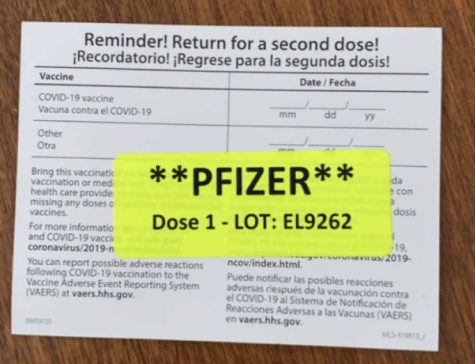Understanding eating disorders
*The name of the student involved has been changed to protect their identity*
Sarah Mullins is crouched down on the floor of her closet and has never felt more alone in her life.
The plan to lock herself in the cramped, cold space was one of many in an attempt to stop herself from eating.
Although Mullins feels alone in that moment, she is one of the 30 million people who suffer from an eating disorder in the U.S
When Mullins was only 10 years old, her pediatric doctor retired. In the process of finding a new pediatrician, Sarah had to meet with a few temporary doctors.
“When I found a new doctor, who I’d only known for literally 5 minutes, she walks into the room after the nurse checks my height and weight and she looks at me and goes ‘you need to lose 10 pounds,’” Mullins said.
Although it didn’t happen right away, Mullins started to view her body differently after that incident. Soon her eyes were only drawn to her insecurities and all she could see were her thighs and her stomach.
Despite the distaste she felt towards her body, Mullins still ate.
“One of the problems I had was that I would eat whatever I wanted but at the same time I would track every single thing I would eat,” she said.
Then, as soon as Mullins went home and stepped on the scale, her eating disorder would take over. When she started to think about the day and all the food she had eaten, all she would feel was regret.
In order to erase the guilt she felt, Mullins turned to excessive aerobic exercise.
“I would look up the calories online and sometimes I would overestimate and then I would run that much on the treadmill. So if I ate 1000 calories during lunch I would have to burn off 1000 calories either by walking or running,” she said.
While exercise is important for a healthy lifestyle, the unreasonable amount Mullins would put in is why she was later diagnosed with bulimia.
According to Eating Disorder Hope, Bulimia Nervosa is a type of eating disorder in which the patient consumes an abnormal amount of food and then attempts to lose weight through “purging.” Methods of purging include self-induced vomiting, excessive use of laxatives and extreme periods of exercise.
Bulimia is only one of the many types of eating disorders. The Diagnostic and Statistical Manual of The American Psychiatric Association breaks down eating disorders into eight categories, with the most commonly known types being Anorexia Nervosa, Bulimia Nervosa and Binge Eating Disorder.
Although eating disorders are psychological illnesses, the physical symptoms are still very visible. Some of the general signs include noticeable fluctuations in weight, menstrual irregularities in females, fainting, stomach cramps and sleep problems.
“On top of it, if you’re not getting the nutrition you need it affects everything from your skin to your nails to your hair. It can impact your mood,” said Danielle Helder, the Student Assistance Counselor. “It’s something that, once you get into it, it’s hard to stop.”
When Mullins’ eating disorder was at its worst, she would do almost anything to avoid eating. Besides exercising non-stop, Mullins would also lock herself in her closet and sleep through most of the weekend.
“I would get home Friday and sleep from 3:30 all the way to the next day so that way I wouldn’t have to eat and I wouldn’t be hungry,” she said. “If I woke up I would force myself back to sleep.”
Despite its addiction-like characteristics, eating disorders can be treated and patients can eventually go into recovery.
Now 18 years old, Mullins is slowly recovering. She no longer feels the need to lose weight to attain a “perfect” body and instead sticks to a healthy diet and exercise routine because she wants to have a healthy body.
Mullins says that not focusing on her flaws helps her. She said, “When you look in the mirror, don’t looks at your imperfections, instead look at how far you’ve come.”
However, for many patients there are always setbacks that cause relapses. For Mullins, she starts to relapse when she gains more weight than normal.
Mullins has a condition called hypothyroidism that creates a severe imbalance in her weight gain and can cause her to gain upwards of six pounds in a single week. The irregularity of her weight can sometimes lead Mullins back into old habits.
According to Helder, societal pressure, high expectations, perfectionism and anxiety are all components that cause people to relapse, as well.
“You can’t see it so if I tell you I have an eating disorder, don’t think it’s a joke. Don’t disregard it just because I don’t look like the stereotypical eating disorder patient. If I’m asking for help, be supportive and be there,” Mullins said.
In agreement with Mullins, Helder says, “the last thing you want to do is just say ‘eat’ because that’s not the issue. Express some concern, listen to them, find some resources.”
If you are currently struggling with or believe you are at risk of developing an eating disorder Mullins believes getting help and finding a support system fast is key when overcoming this medical condition. Getting help even if you don’t want to will stop an eating disorder from becoming something worse.
National Eating Disorder Helpline: (800) 931-2237

Githmie Goonatilleke is a senior and this is her fourth and final year writing for The Glen Echo. In her free time Githmie likes watching hockey and thinking...







